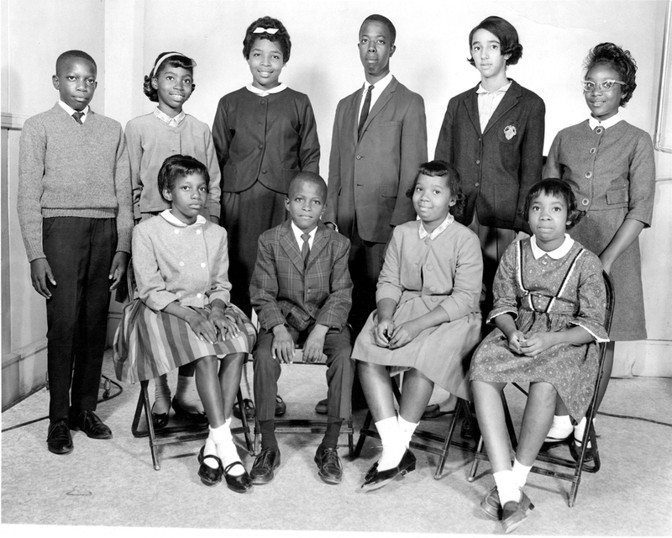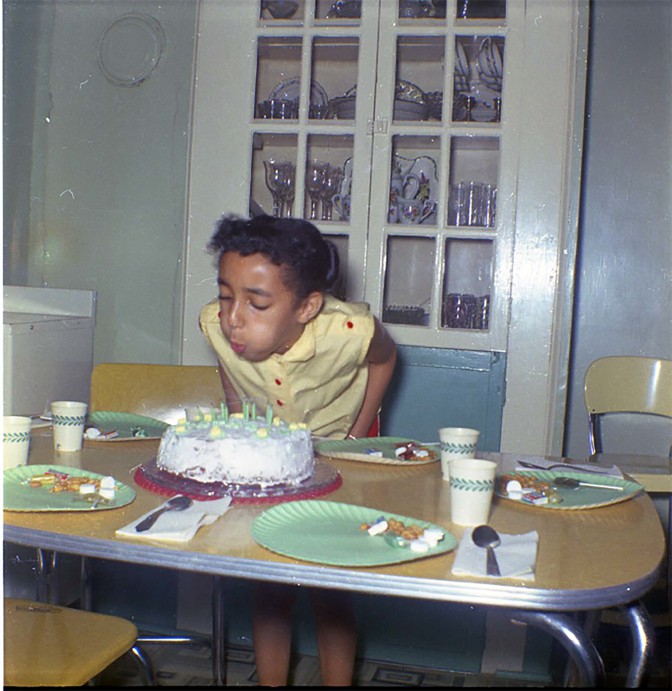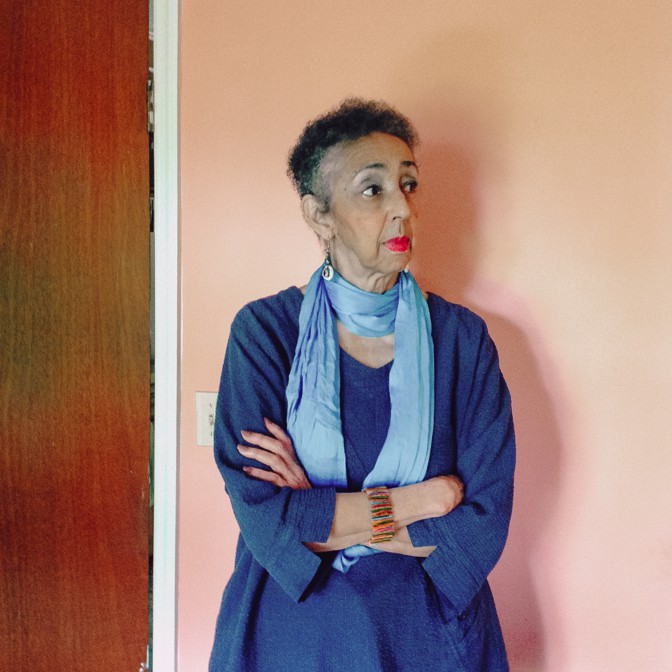The Persistence of Segregation in South Carolina
Editor’s Note: This is the fourth story in The Firsts, a five-part series about the children who desegregated America’s schools.

Millicent Brown could only be honest. It was the summer of 1960, and she was standing in front of the school board in Charleston County, South Carolina. She was preparing to enter the seventh grade. The row of men—all white—studied her as they lobbed loaded questions her way. “Don’t you like your teachers?” one asked. “Don’t you like your friends?” asked another. The issue that ultimately lay beneath these questions was simple: Why did a Black child want to attend a white school?
Sixty years later, Brown can remember how frustrated the interrogation made her. “How dare they try to make me speak ill of my Black community?” she says. But she didn’t bristle. “Oh, I love my teachers, and I love my friends, it’s not that at all,” she remembers saying. “It’s just that I know there are things and facilities that are made available to other schools that we don’t have. I’ve heard that there are lockers … I’ve never seen a locker in my life.”
Millicent had not been prepared for the meeting. Earlier that day, her father had told her mother to get their daughter dressed in something nice, and then he whisked her off to the meeting with little explanation. But Millicent quickly realized that she must have said something right. Matthew J. Perry, the civil-rights lawyer from South Carolina who would become the first Black federal judge from the Deep South, was in town. When Millicent turned from the interrogating board members to Perry, his face gave away that she had performed admirably. He was beaming. Still: “I was always mad at my father for not preparing me,” she told me last year. The meeting established Millicent as the face of school desegregation in Charleston—the person whose name would forever be linked to dismantling the educational caste system in the city.
It should have been her older sister Minerva. In 1959, four years after the Supreme Court ruled that segregated schools were inherently unequal, Millicent’s father, Joseph—who went by the name J. Arthur Brown—filed a lawsuit alongside the NAACP and other local families to integrate the port city’s schools. Minerva, a high schooler and an activist in her own right, was named as the lead plaintiff. But segregationists came ready for a fight.
Beginning in 1951, the South Carolina legislature passed a general sales tax that anticipated a Supreme Court ruling on school segregation. The tax was intended for school construction: The state would build new Black elementary and high schools with modern architecture and materials so they could argue that they did not discriminate against Black students. The strategy was known as “school equalization,” and by the time the Court issued its second Brown ruling in 1955—that integration must happen “with all deliberate speed”—each district in South Carolina had, or was building, a separate school for Black students. The state was also trying to slow-walk Minerva’s suit.
When Minerva was about to graduate, with no resolution to the case, Millicent became the lead plaintiff. Suddenly, she found herself in front of the school board, and became more aware of the magnitude of her father’s challenge to the system. She also began to understand just how intractable racism can be.

The Browns’ dinner table was often a sight to behold. Her father was a real-estate broker and, in 1955, became the president of the Charleston chapter of the NAACP, and later became the state NAACP president. When NAACP leaders came to town, they stayed with the Browns. Seeing such luminaries in her home “was foundational,” Brown told me. Among the visitors were Constance Baker Motley, the civil-rights lawyer who would become the first Black woman appointed to the federal bench; Roy Wilkins, the leader of the NAACP from 1955 to 1977; and Matthew Perry. “Whether I understood it all or not is doubtful,” she said. But “my great benefit in being around these people is that I learned not to see Black issues as any one small thing.”
As Brown’s case worked its way through mediation and state courts, her father turned his attention to other fights, including the push to integrate other public accommodations—beaches, golf courses, and parks. (When a federal judge eventually ruled that all state parks must be opened to Black people, the state closed all of them for about a year to avoid complying. They didn’t fully integrate for another three years.)
In late May 1962, arguing that they had exhausted all administrative remedies to integrate the public schools, lawyers representing Brown and seven other Black children filed a lawsuit in the U.S. District Court for the Eastern District of South Carolina, where Judge Robert Martin presided. Five other Black children later joined the suit. They petitioned the court to force the district to stop assigning students to schools based on their race. By the time the case was heard by Martin in August 1963, the parents of six white students were seeking to join with the school board as co-defendants, claiming that their children would be adversely affected by integration.
Just over two weeks after Martin heard the case, while the Browns were on vacation near Myrtle Beach, Millicent’s father opened the day’s newspaper and saw that Martin had issued the ruling. “I was excited because my parents were excited,” Brown said. Then her father began to read. The judge acknowledged that the Supreme Court’s rulings in Brown made it clear that the district could not legally bar Black students from attending formerly all-white schools. But, he wrote, the school year was set to begin in a handful of weeks, and it would be “impractical” to expect schools to be ready to integrate in such a short span of time. He cleared the way for Millicent and the other plaintiffs to enroll that fall—but other Black students would have to wait.
Over the 12 days between Martin’s ruling and the first day of school, Millicent’s parents raced to prepare her. But of all the things that happened during that time, what she remembers most is Dippity-do. Brown’s oldest sister had offered to do her hair the night before her first day. “She brings out this gel called Dippity-do and so I washed my hair and she sets it because that’s the new way that Black women are doing their hair,” she said. But as she sat with her hair in rollers, she wondered if she had made a big mistake. “I don’t sleep that night because I’m going to represent the race the next day, and I realized that I never used this before,” she laughed. “What is this going to look like?”
She may have been on the verge of walking into history, but she was still only 15 years old.

Millicent’s first day at Rivers High School in Charleston—September 3, 1963—went smoothly. There were no throngs of people jeering and throwing things. The mayor and the police chief had issued a statement the day before, urging people to stay away. “The people in Charleston have extremely good judgment. We have no patience with violence or with people who try to take the law into their own hands,” Mayor J. Palmer Gaillard told The New York Times. Her father walked her into the building, checked which class she would be assigned to, and then left. “My father was not one for prepping me,” she told me. “I guess he had faith in me.” But when she got to her homeroom class, the signs that this would not be easy were quickly apparent. They were written on her teacher’s face. “She looks like she’s about to have a hissy fit. She’s just nervous,” Brown said. “I spend the rest of that day and probably the next couple of days worried that I’m going to give this woman a heart attack.” That was likely the least of her worries: Three bomb threats were called in during those first days.
When a newspaper reporter interviewed Brown about her experience, she gave a glowing review. “I had a wonderful day,” she said. “I heard no bad comments at all. All of the students and teachers went out of their way to be helpful.” However, as the days wore into months (and the months into years), the tone of the place changed. “I never learned what the signal was … but I would walk down the hallway and they would part like the Red Sea and go to the walls and cringe and make noises like I was a pariah of some sort,” she told me. “That’s the sort of thing you never forget.”
There were other slights during Brown’s three years at Rivers. White girls would crowd into the bathroom stalls to keep her from using the restroom between classes. At large gatherings of the student body in the auditorium, when students would walk in pairs down the aisle to exit, white students refused to walk with her. After a while, one white student, Barbara Solomon, began to walk with her in the halls, but she was the exception.
By her senior year, she had begun to fight back: When a white classmate wouldn’t walk with her on the way out of the auditorium, she held up the recessional for a minute until he finally relented.
“I kind of got my backbone. I was not this little colored girl who’s just so happy to be at their school that I’m going to let y’all dictate to me how everything works,” she told me. “I had to grow into that.”

After high school, Brown went to the College of Charleston, earned her master’s degree from The Citadel, and got a doctorate in history from Florida State University. For years, she taught history at Claflin University, Hofstra University, North Carolina A&T, and other schools. She has interviewed dozens of other “firsts” like herself. And she has watched as the inequality that marked her experience remains pervasive.
“We’re not doing the real reckoning,” she said. “I grew up in an NAACP mentality. My father really thought, and I did too for many years, that integrating schools was what was going to work. Once these children got to go to school together and grew up together and learned that they were the same, we knew that America was really going to be on the path to change,” she said. “I’m here to tell you that my daddy is probably flipping in his grave. He didn’t put his beloved daughter into Rivers High School, and three years of angst, for it to work out the way it is. That wasn’t what we were fighting for.”
The struggles in the 1950s and ’60s were not just to get Black people into white spaces, Brown said. “We can’t keep teaching that people integrated so Black folks could be with white people.” Her parents paid taxes, and they were not receiving an equal benefit; the resources flowed to the white schools. Even now, as a 2018 editorial in the Charleston Post and Courier put it, “all five of the district’s wealthiest schools are overwhelmingly white. All five of the poorest are overwhelmingly black. That’s a problem.”
But Brown knows that the injustice doesn’t exist only in her city. The lessons she learned at her family’s dinner table still color her thoughts. “I’m sure there are lots of communities like this, where when we maybe stumbled into some desegregation and maybe even moved towards some more integration, people wanted to assume that that means the trouble is over,” she said. But the deeper issues were never addressed. “We hedged it; we ran away. A few people got some city jobs. We started electing a few more Black folks to public office. We made those little baby steps.” But the roots of systemic oppression were never addressed, and they are all interconnected.
“Why are our Black schools the most underfunded and underserved? Why, when we talk about the need to close schools, why are the majority-Black schools or all-Black schools the ones that are closing? Why have Black businesses basically been just shut down from the peninsula?” Until there is that broader reckoning, she said, an acknowledgment that desegregation was just the beginning, “I will go to my grave knowing that time just hasn’t come yet.”